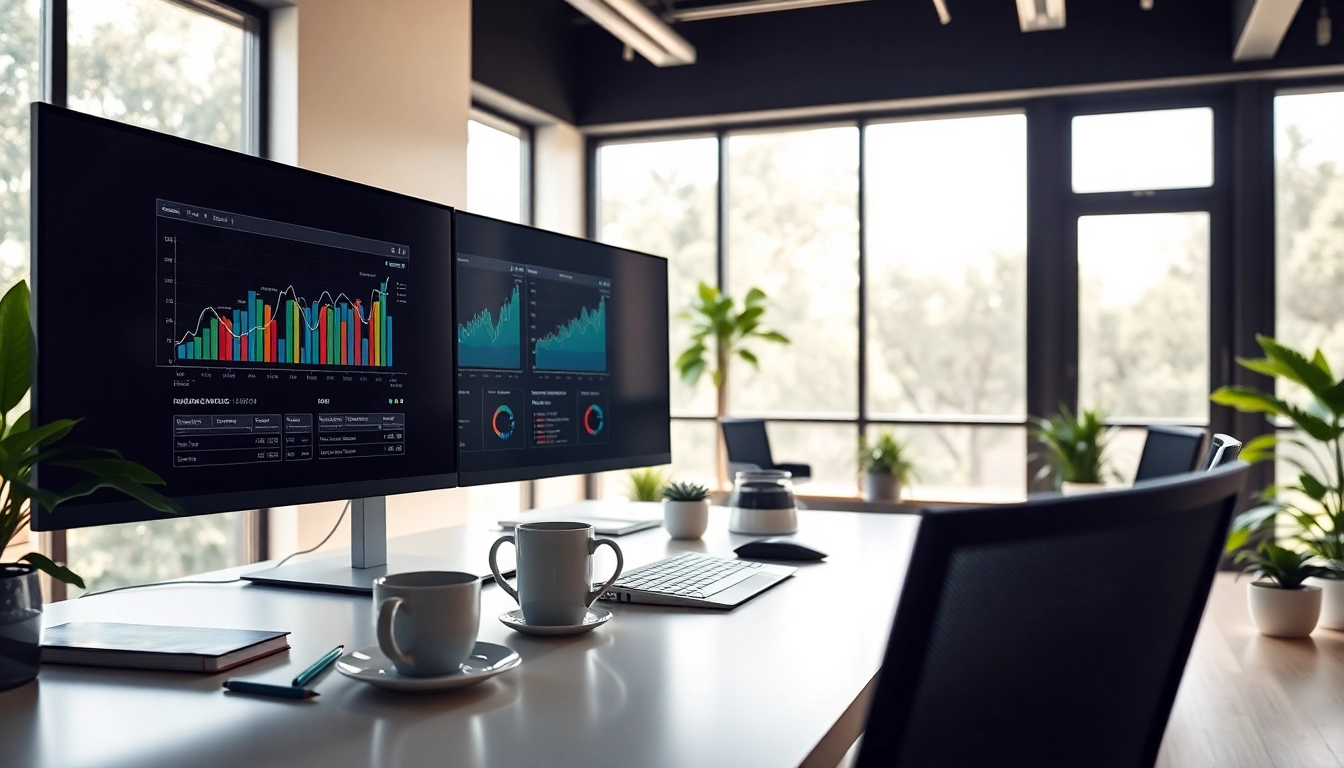1. Understanding Modern Workspaces
1.1 Definition of a Modern Workspace
A modern workspace transcends the traditional office environment, incorporating innovative designs, advanced technologies, and flexible arrangements that cater to diverse working styles. It is characterized by an emphasis on collaboration, ergonomic comfort, and well-being, aiming to foster creativity and productivity among employees. In essence, the modern workspace is not just about the physical location but also about the culture and tools that support the evolving nature of work.
1.2 Importance in Today’s Digital Age
As businesses increasingly adapt to digital technologies, the importance of a modern workspace cannot be overstated. Today’s workforce is more mobile and diverse than ever, necessitating environments that facilitate remote collaboration and adaptability. A well-designed workspace enhances employee satisfaction, reduces turnover rates, and promotes productivity by providing a conducive atmosphere for focus and creativity. Companies that neglect these aspects may struggle to attract and retain top talent in a competitive market.
1.3 Key Features of Effective Workspaces
Effective modern workspaces share several key features, including:
- Flexibility: The ability to adapt spaces for different tasks, from collaborative meetings to quiet work time.
- Technological Integration: Seamless use of tech tools that foster communication, project management, and productivity.
- Ergonomic Furniture: Well-designed furniture that promotes health and comfort, reducing work-related injuries.
- Natural Light: Access to natural light and outdoor views to enhance mood and productivity.
- Community Spaces: Areas for informal gatherings that encourage social interactions and teamwork.
2. Elements of a Productive Workspace
2.1 Ergonomic Furniture Selection
Investing in ergonomic furniture is crucial for creating a productive workspace. This type of furniture is designed to support the body during extended periods of work, minimizing discomfort and the risk of injuries. Essential elements include:
- Adjustable Desks: Desks that allow workers to alternate between sitting and standing promote movement and reduce fatigue.
- Ergonomic Chairs: Chairs designed to support the lower back, with adjustable features for customized comfort.
- Monitor Stands: Elevated monitors that reduce neck strain and improve posture.
2.2 Optimal Technology Integration
The integration of technology within the workspace is essential for maintaining productivity. This includes:
- Collaboration Tools: Software like Slack or Microsoft Teams that facilitate real-time communication.
- Project Management Software: Tools such as Trello or Asana that keep tasks organized and tracked.
- Cloud Solutions: Cloud storage systems that allow seamless access to files from anywhere.
2.3 Organizing Your Digital and Physical Space
Organization is key to optimizing productivity. This can be achieved through:
- Decluttering: Removing unnecessary items from both the digital and physical workspace helps maintain focus.
- File Management Systems: Implementing clear naming conventions and folder structures for digital files.
- Routine Clean-up: Establishing regular cleaning schedules to maintain an orderly environment.
3. Best Practices for Maintaining Productivity
3.1 Time Management Techniques
Implementing effective time management techniques can significantly enhance productivity. Here are some popular methods:
- The Pomodoro Technique: Working in focused intervals (typically 25 minutes) followed by short breaks to maintain concentration.
- Time Blocking: Allocating specific blocks of time to different tasks to minimize distractions and maximize focus.
- Prioritization Matrices: Utilizing tools like the Eisenhower Box to distinguish between urgent and important tasks.
3.2 Creating a Distraction-Free Environment
A productive workspace should minimize distractions. This can involve:
- Noise-Canceling Devices: Using headphones or soundproofing strategies to reduce auditory distractions.
- Dedicated Areas: Designating specific areas for collaborative work and others for focused tasks.
- Setting Boundaries: Clearly outlining times for work vs. personal interactions, especially in shared spaces.
3.3 Setting Up Effective Workflow Processes
Establishing clear workflows helps streamline productivity. Effective processes may include:
- Standard Operating Procedures (SOPs): Documenting step-by-step instructions for common tasks increases efficiency.
- Regular Check-ins: Scheduling routine meetings to ensure alignment and tackle challenges collectively.
- Continuous Improvement: Regularly reviewing workflow processes to identify inefficiencies and implement improvements.
4. Tools and Resources to Enhance Productivity
4.1 Software for Collaboration and Project Management
Leveraging the right software can transform the productivity landscape of a workspace. Consider these tools:
- Slack: Ideal for instant messaging and team collaboration.
- Trello: A flexible project management tool that visualizes tasks using boards and cards.
- Zoom: Facilitating virtual meetings and communication, especially for remote teams.
4.2 Innovative Gadgets and Accessories
Innovative gadgets can significantly impact productivity. Some noteworthy examples are:
- Smart Pens: Digital pens that translate written notes into digital format.
- Wireless Charging Stations: Keeping devices powered without the hassle of tangled cables.
- Multi-functional Adapters: Simplifying connectivity to multiple devices with a single port.
4.3 Online Communities and Support Resources
Engaging with online communities can provide support and inspiration. Resources include:
- Forums and Groups: Websites and platforms like Reddit and LinkedIn groups that focus on productivity and workspace design.
- Webinars and Workshops: Learning opportunities that offer strategies and tools for improving work practices.
- Blogs and Articles: Accessible insights from experts in the field, including platforms like www.sudswild.com.
5. Measuring Workspace Productivity
5.1 Key Performance Indicators to Track
Measuring productivity is essential for understanding workspace effectiveness. Key performance indicators (KPIs) may include:
- Task Completion Rates: Monitoring how many assigned tasks are completed in a given timeframe.
- Employee Satisfaction Scores: Utilizing surveys to assess how employees feel about their work environment.
- Time Utilization Rates: Evaluating how effectively employees are using their working hours.
5.2 Analyzing Space Effectiveness
Analyzing the physical workspace’s effectiveness involves assessing how well it supports activities. This analysis can be conducted through:
- Feedback Mechanisms: Implementing regular feedback sessions with employees to gather insights on workspace functionality.
- Utilization Studies: Observing how often different areas of the workspace are used to determine which spaces require adjustments.
- Benchmarking: Comparing workspace performance against industry standards to identify areas for improvement.
5.3 Improving Based on Feedback and Data
Continuous improvement should be a focus for organizations seeking long-term productivity gains. This process can involve:
- Iterative Changes: Implementing adjustments based on feedback and monitoring their impact over time.
- Open Communication Channels: Encouraging ongoing dialogue about workspace challenges and potential solutions.
- Training and Development: Providing employees with resources and training to adapt to new workspace norms and technologies.








